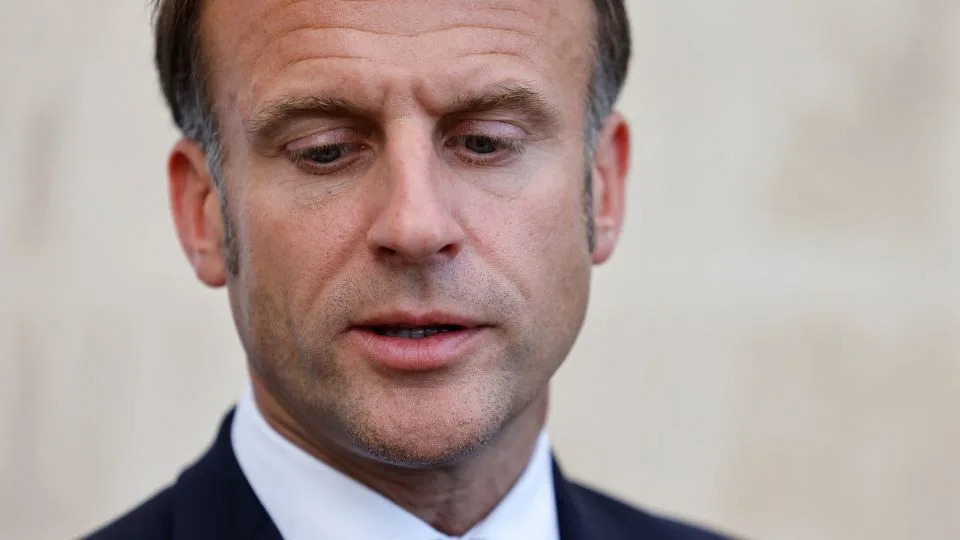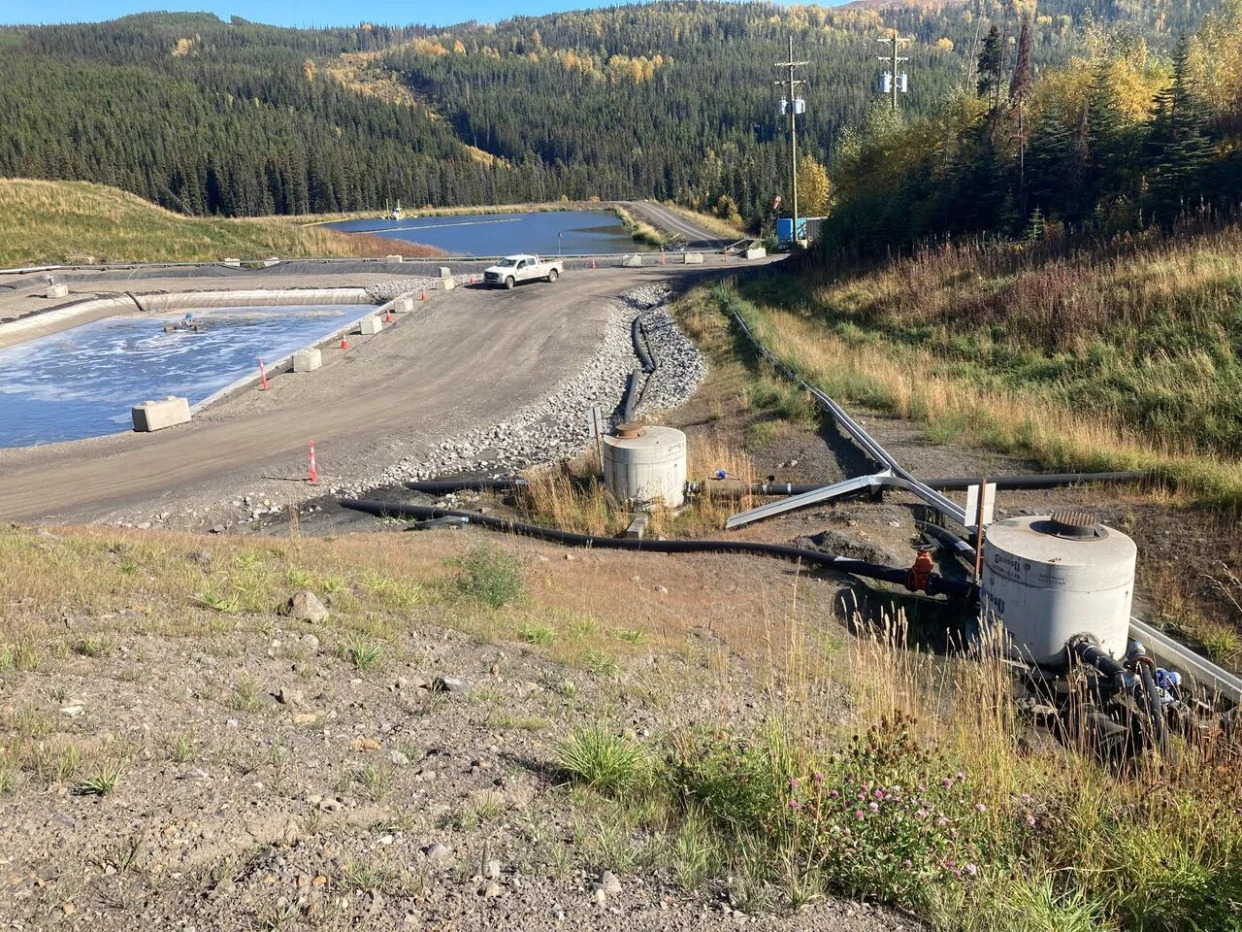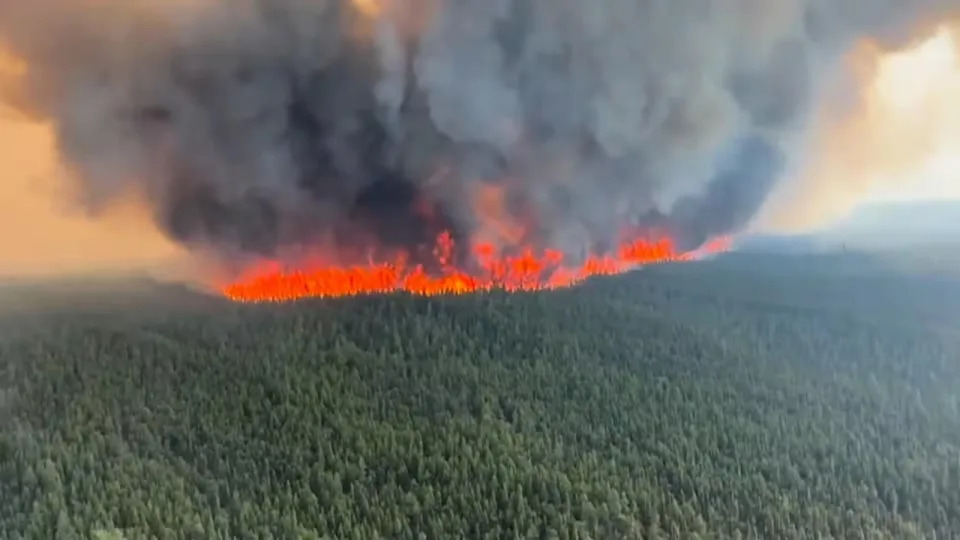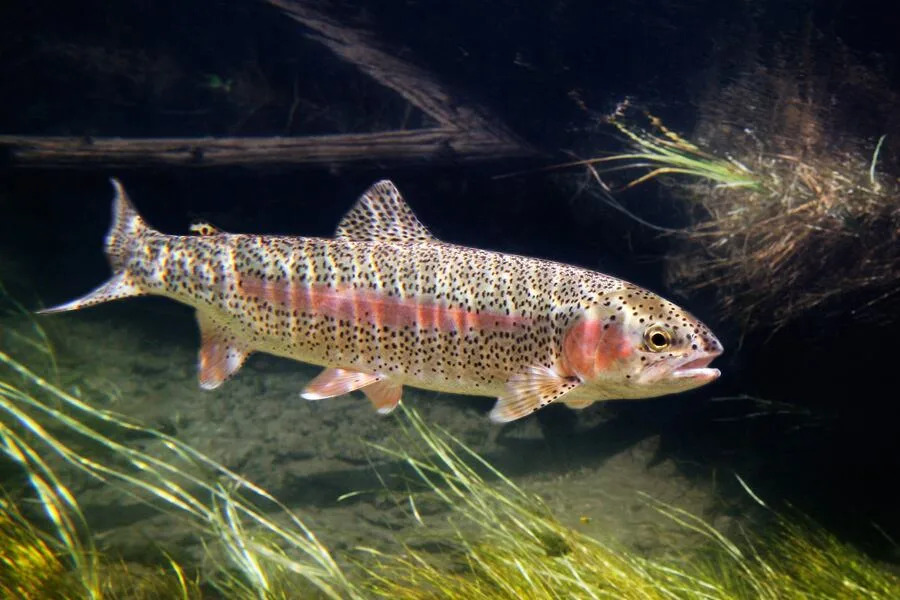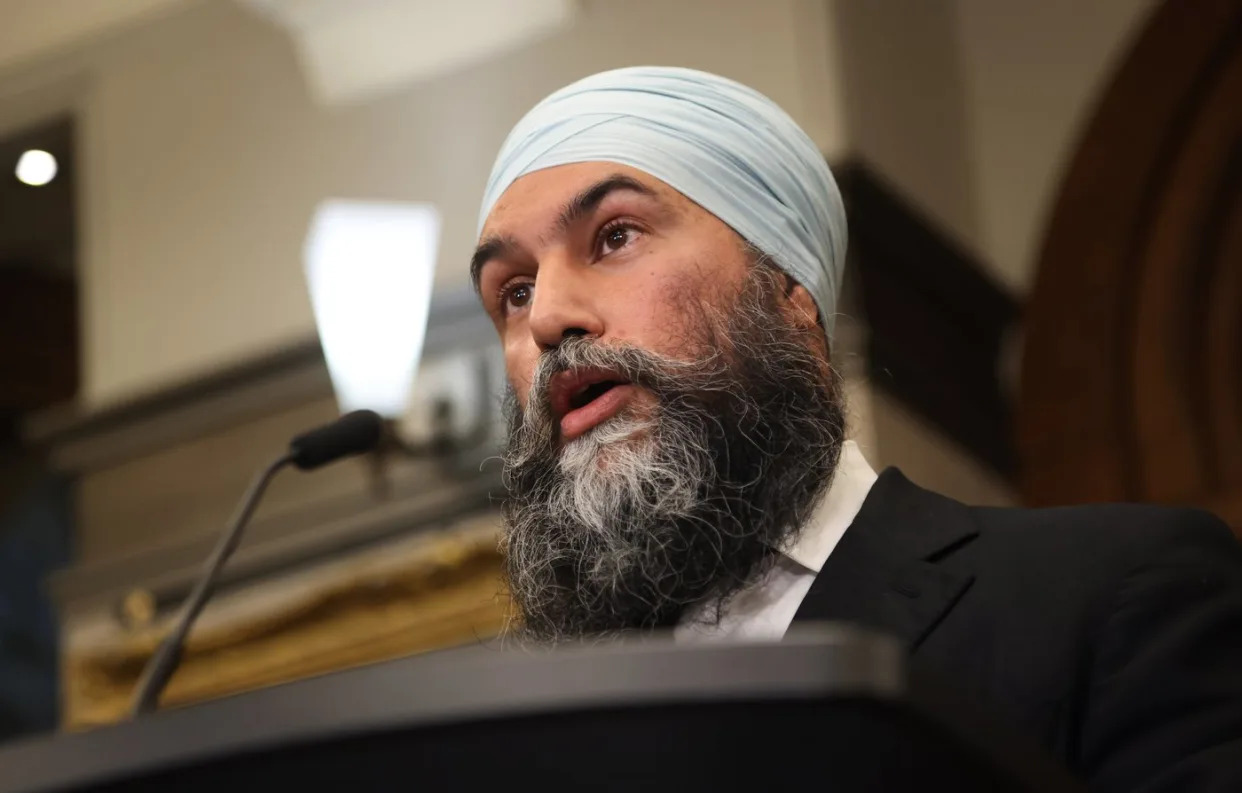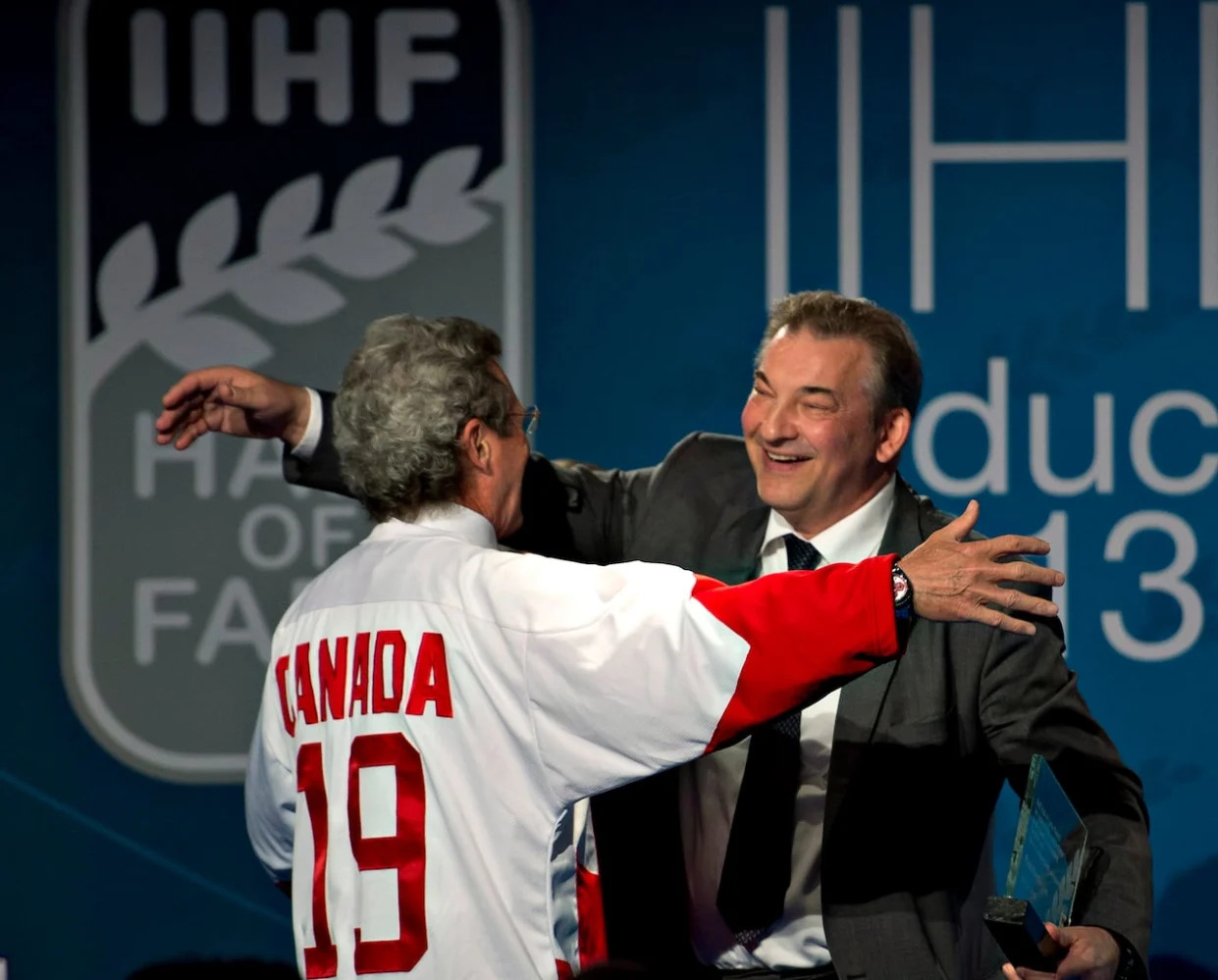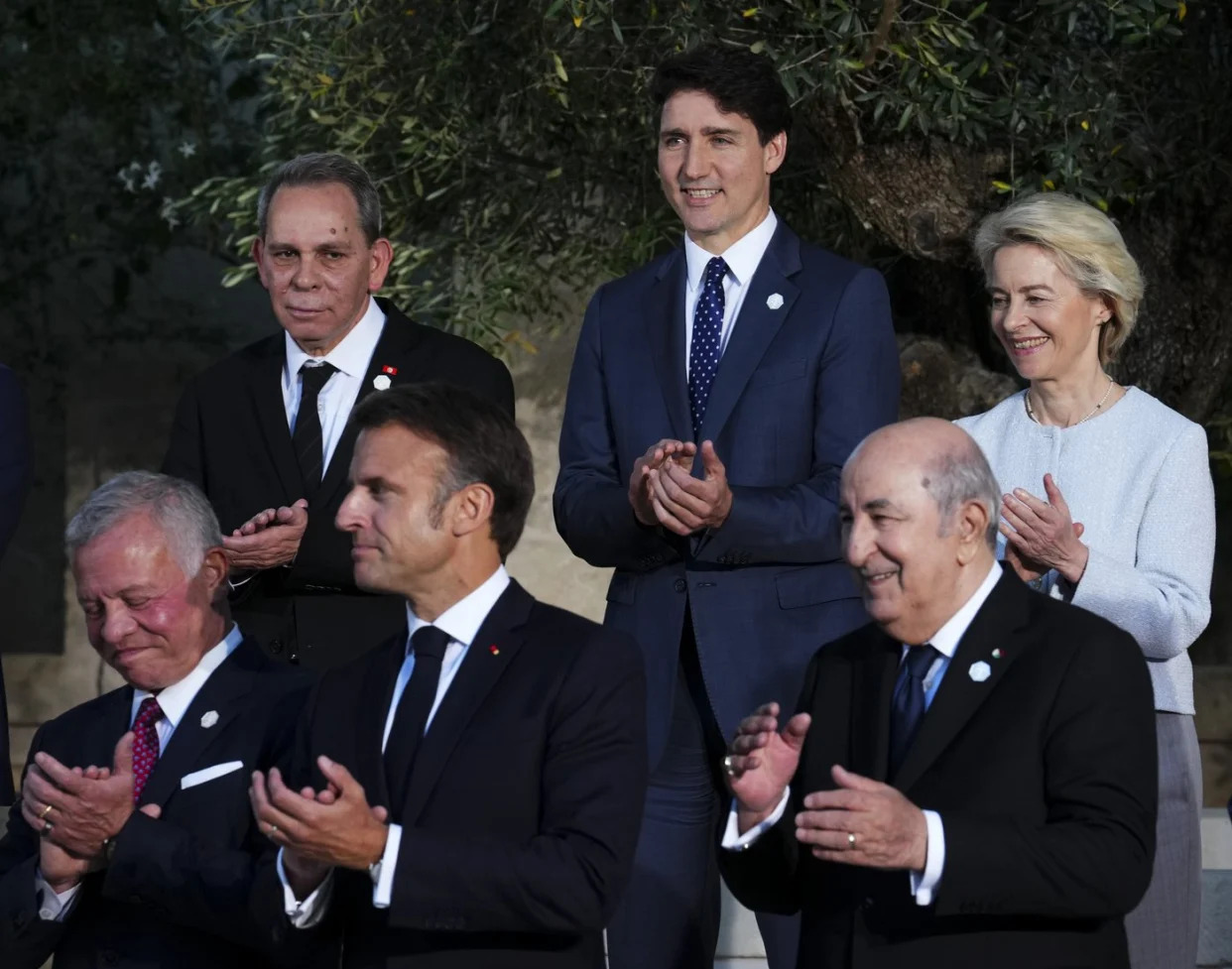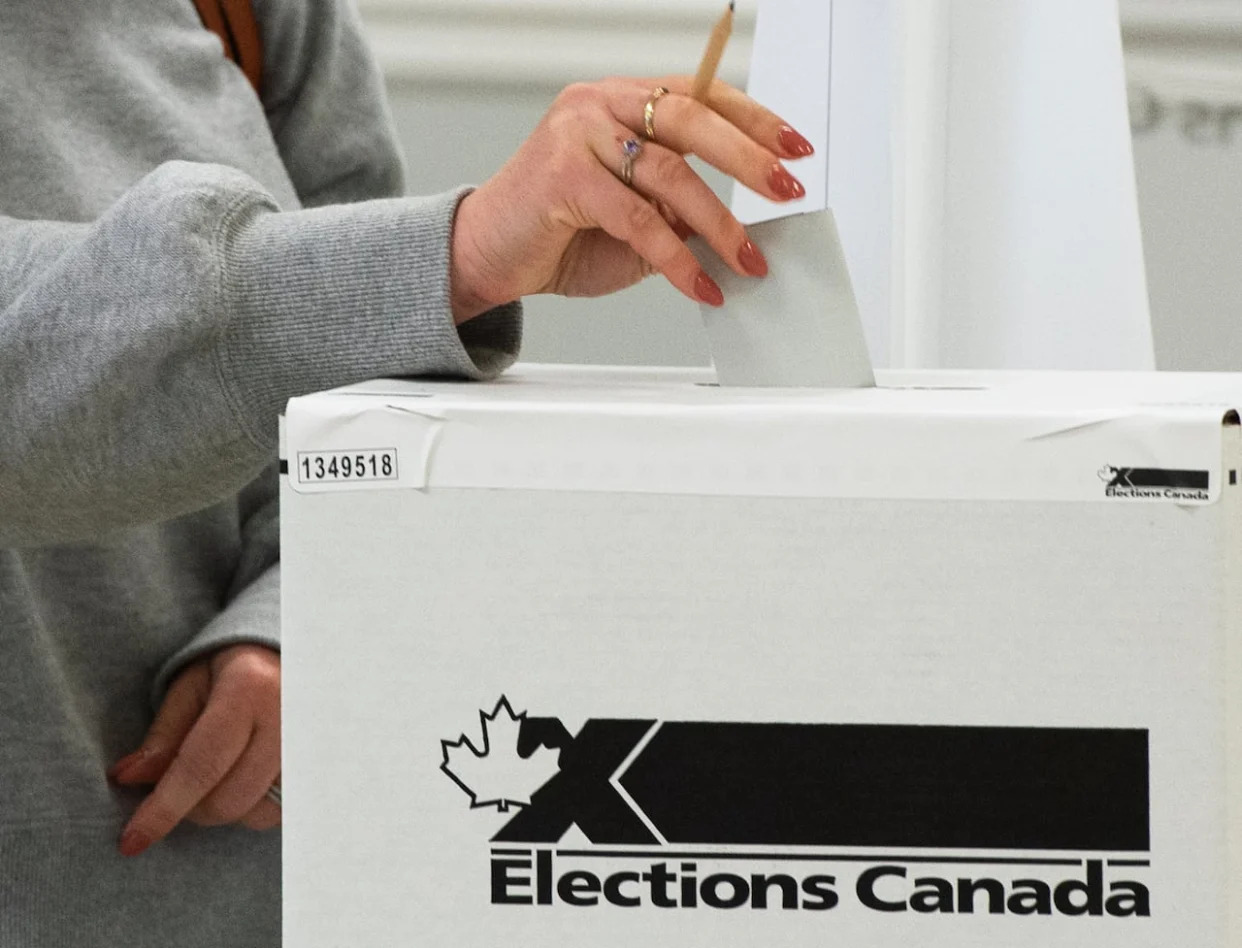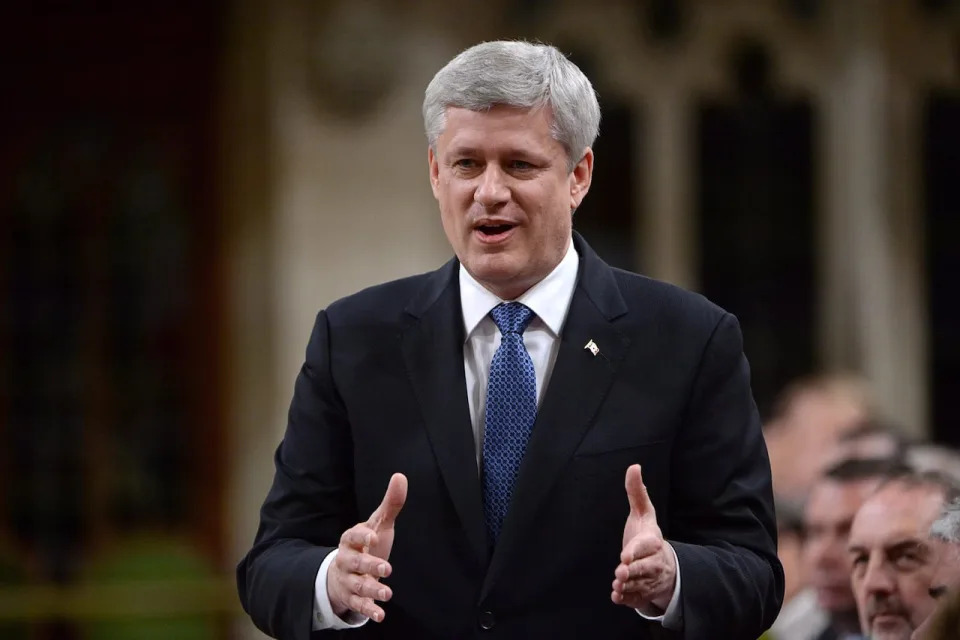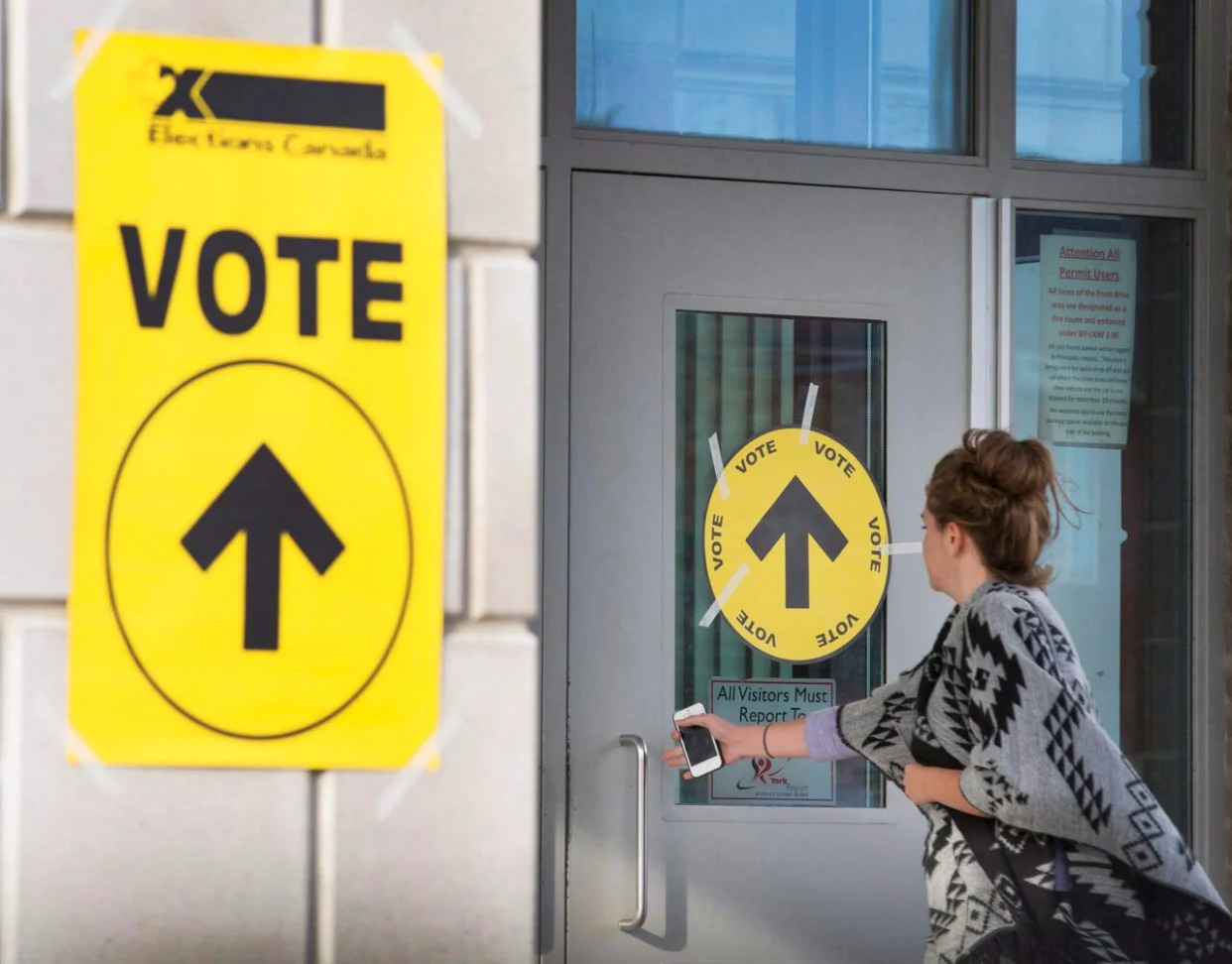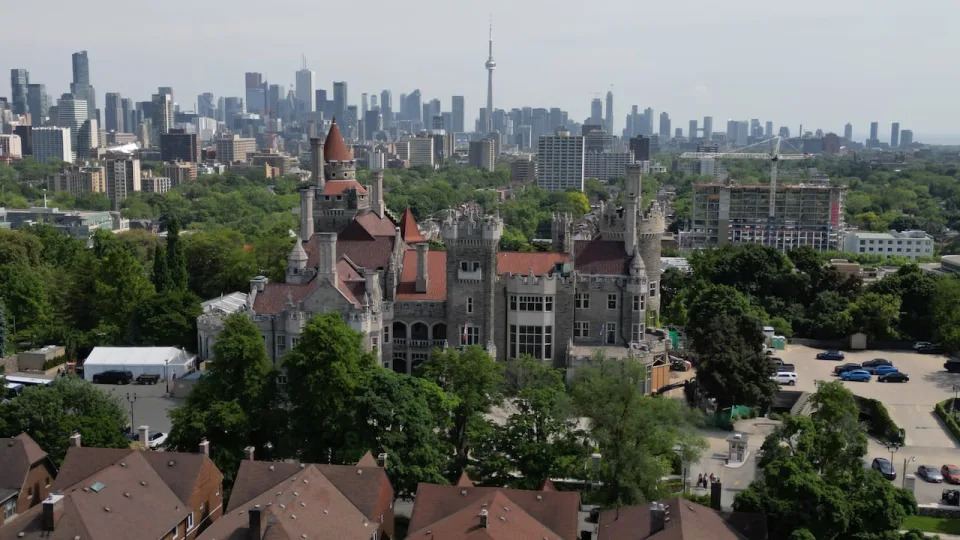Mike Stobbe
Fri, June 14, 2024
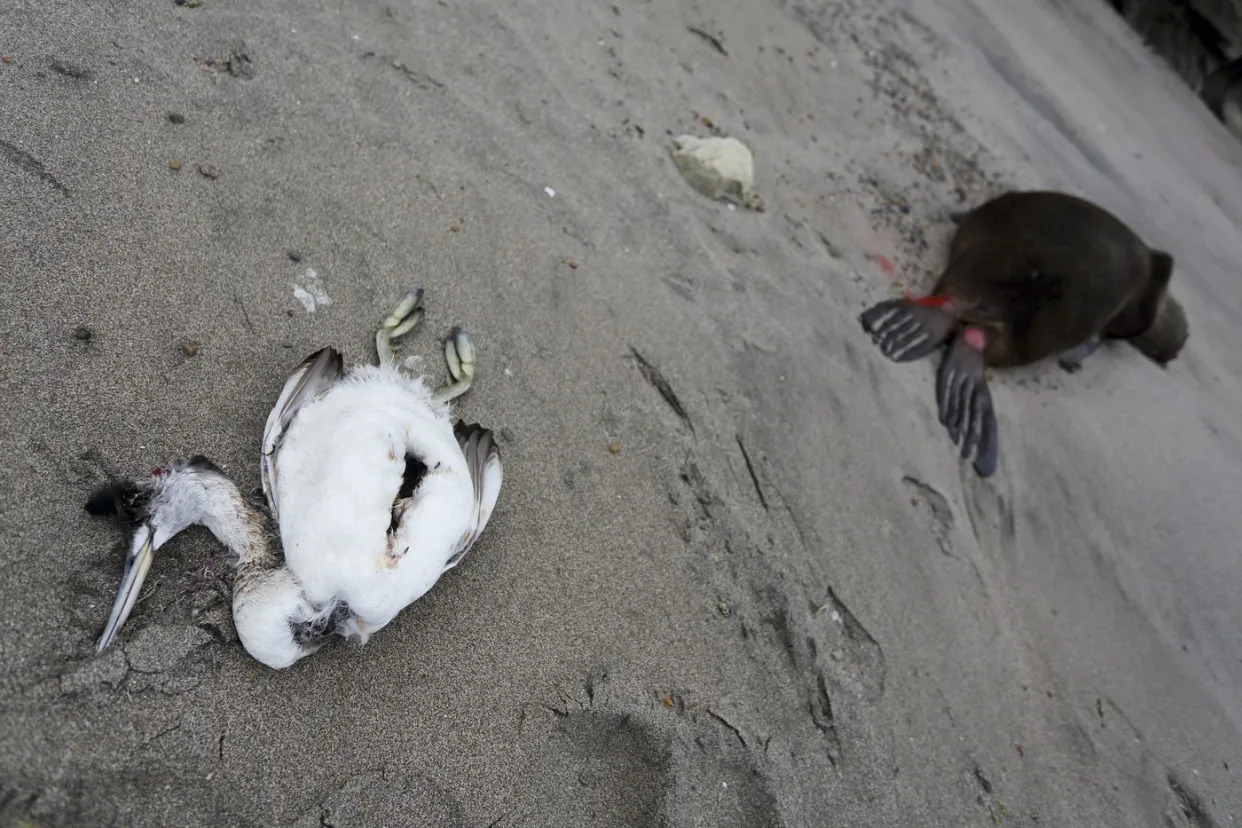
NEW YORK (AP) — In the last two years, bird flu has been blamed for the deaths of millions of wild and domestic birds worldwide. It's killed legions of seals and sea lions, wiped out mink farms, and dispatched cats, dogs, skunks, foxes and even a polar bear.
But it seems to have hardly touched people.
That's "a little bit of a head scratcher,” although there are some likely explanations, said Richard Webby, a flu researcher at St. Jude Children’s Research Hospital in Memphis, Tennessee. It could have to do with how infection occurs or because species have differences in the microscopic docking points that flu viruses need to take root and multiply in cells, experts say.
But what keeps scientists awake at night is whether that situation will change.
“There's a lot we don't understand,” said Dr. Tom Frieden, a former CDC director who currently heads Resolve to Save Lives, a not-for-profit that works to prevent epidemics. “I think we have to get over the 'hope for the best and bury our head in the sand' approach. Because it could be really bad."
Some researchers theorize that flu viruses that originated in birds were the precursors to terrible scourges in humans, including pandemics in 1918 and 1957. Those viruses became deadly human contagions and spread in animals and people.
A number of experts think it’s unlikely this virus will become a deadly global contagion, based on current evidence. But that's not a sure bet.
Just in case, U.S. health officials are readying vaccines and making other preparations. But they are holding off on bolder steps because the virus isn't causing severe disease in people and they have no strong evidence it’s spreading from person to person.
The flu that's currently spreading — known as H5N1 — was first identified in birds in 1959. It didn’t really begin to worry health officials until a Hong Kong outbreak in 1997 that involved severe human illnesses and deaths.
It has caused hundreds of deaths around the world, the vast majority of them involving direct contact between people and infected birds. When there was apparent spread between people, it involved very close and extended contact within households.
Like other viruses, however, the H5N1 virus has mutated over time. In the last few years, one particular strain has spread alarmingly quickly and widely.
In the United States, animal outbreaks have been reported at dozens of dairy cow farms and more than 1,000 poultry flocks, according to the U.S. Department of Agriculture. Four human infections have been reported among the hundreds of thousands of people who work at U.S. poultry and dairy farms, though that may be an undercount.
Worldwide, doctors have detected 15 human infections caused by the widely circulating bird flu strain. The count includes one death — a 38-year-old woman in southern China in 2022 — but most people had either no symptoms or only mild ones, according to the U.S. Centers for Disease Control and Prevention.
There's no way to know how many animals have been infected, but certain creatures seem to be getting more severe illnesses.
Take cats, for example. Flu is commonly thought of as a disease of the lungs, but the virus can attack and multiply in other parts of the body too. In cats, scientists have found the virus attacking the brain, damaging and clotting blood vessels and causing seizures and death.
Similarly gruesome deaths have been reported in other animals, including foxes that ate dead, infected birds.
The flu strain's ability to lodge in the brain and nervous system is one possible reason for "higher mortality rate in some species,” said Amy Baker, an Iowa-based U.S. Department of Agriculture scientist who studies bird flu in animals. But scientists "just don’t know what the properties of the virus or the properties of the host are that are leading to these differences,” Baker said.
Unlike cats, cows have been largely spared. Illnesses have been reported in less than 10% of the cows in affected dairy herds, according to the USDA. Those that did develop symptoms experienced fever, lethargy, decreased appetite and increased respiratory secretions.
Cow infections largely have been concentrated in the udders of lactating animals. Researchers investigating cat deaths at dairy farms with infected cows concluded the felines caught the virus from drinking raw milk.
Researchers are still sorting out how the virus has been spreading from cow to cow, but studies suggest the main route of exposure is not the kind of airborne droplets associated with coughing and sneezing. Instead it's thought to be direct contact, perhaps through shared milking equipment or spread by the workers who milk them.
Then there's the issue of susceptibility. Flu virus need to be able to latch onto cells before they can invade them.
“If it doesn't get into a cell, nothing happens. ... The virus just swims around,” explained Juergen Richt, a researcher at Kansas State University.
But those docking spots — sialic acid receptors — aren't found uniformly throughout the body, and differ among species. One recent study documented the presence of bird flu-friendly receptors in dairy cattle mammary glands.
Eye redness has been a common symptom among people infected by the current bird flu strain. People who milk cows are eye level with the udders, and splashes are common. Some scientists also note that the human eye has receptors that the virus can bind to.
A study published this month found ferrets infected in the eyes ended up dying, as the researchers demonstrated that the virus could be as deadly entering through the eyes as through the respiratory tract.
Why didn't the same happen in the U.S. farmworkers?
Some experts wonder whether people have some level of immunity, due to past exposure to other forms of flu or to vaccinations. However, a study in which human blood samples were exposed to the virus indicated there's little to no existing immunity to this version of the virus, including among people who'd had seasonal flu shots.
A more menacing question: What happens if the virus mutates in a way that makes it more lethal to people or allows it to spread more easily?
Pigs are a concern because they are considered ideal mixing vessels for bird flu to potentially combine with other flu viruses to create something more dangerous. Baker has been studying the current strain in pigs and found it can replicate in the lungs, but the disease is very mild.
But that could all change, which is why there's a push in the scientific community to ramp up animal testing.
Frieden, of Resolve to Save Lives, noted public health experts have been worried about a deadly new flu pandemic for a long time.
“The only thing predictable about influenza is it's unpredictable,” he said.
___
The Associated Press Health and Science Department receives support from the Howard Hughes Medical Institute’s Science and Educational Media Group. The AP is solely responsible for all content.
Mike Stobbe, The Associated Press
Former CDC director predicts bird flu pandemic
Lauren Irwin
Sat, June 15, 2024
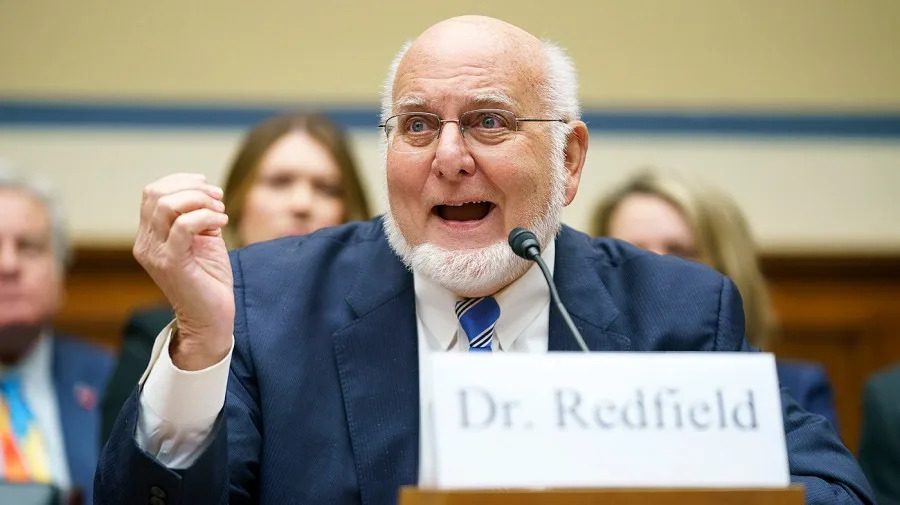
Former Centers for Disease Control and Prevention (CDC) Director Robert Redfield said he predicts a bird flu pandemic will happen, it’s just a matter of when that will be.
Redfield joined NewsNation Friday to discuss the growing concern for bird flu, as the virus has been detected in dozens of cattle across the country and the World Health Organization identified the first human death in Mexico.
“I really do think it’s very likely that we will, at some time, it’s not a question of if, it’s more of a question of when we will have a bird flu pandemic,” Redfield said.
He also noted that bird flu has a “significant mortality” when it enters humans compared to COVID-19. Redfield predicts the mortality is “probably somewhere between 25 and 50 percent mortality.” NewsNation noted that the death rate for COVID was 0.6 percent.
At the end of May, the CDC identified the third human case of someone diagnosed with the virus since March. None of the three cases among farmworkers were associated with one another. Symptoms have included a cough without fever and pink eye.
There is no evidence yet that the virus is spreading between humans. Redfield said he knows exactly what has to happen for the virus to get to that point because he’s done lab research on it.
Scientists have found that five amino acids must change in the key receptor in order for bird flu to gain a propensity to bind to a human receptor “and then be able to go human to human” like COVID-19 did, Redfield said.
“Once the virus gains the ability to attach to the human receptor and then go human to human, that’s when you’re going to have the pandemic,” he said. “And as I said, I think it’s just a matter of time.”
Redfield noted that he doesn’t know how long it will take for the five amino acids to change, but since it is being detected in cattle herds across the country, he is a bit concerned.
More than 40 cattle herds nationwide have confirmed cases of the virus. The CDC is tracking wastewater treatment sites to pinpoint where the virus is but the agency said the general public’s current risk of contracting the virus is low.
Since cattle live close to pigs and the virus is able to evolve from pigs to humans, there is cause for concern. Still, he argued, there is greater risk for the disease to be lab-grown.
“I know exactly what amino acids I have to change because in 2012, against my recommendation, the scientists that did these experiments actually published them,” he said. “So, the recipe for how to make bird flu highly infection for humans is already out there.”
Top CDC officials warns US needs ‘more tests’ in face of bird flu fears
Melody Schreiber
Fri, June 14, 2024

Dr Nirav Shah in Augusta, Maine, on 28 April 2020.Photograph: Robert F Bukaty/AP
There is not enough testing for bird flu among people and animals in the US, says Dr Nirav Shah, principal deputy director of the US Centers for Disease Control and Prevention (CDC) – but he is wary of pushing the issue and damaging fragile trust among farm workers and owners.
“We would like to be doing more tests,” Shah said. “We’d like to be testing particularly not just symptomatic workers, but anyone on a farm who is exposed.”
But, Shah said, “right now we want to be in a role where we’re building trust with farms and farm workers.”
For the general public, the risk is still low, the CDC says. But the risks are elevated for agricultural workers in close contact with animals – and potentially the people around them.
The CDC is “preparing for the possibility” that the virus could evolve to spread more easily among people, according to a report published on Wednesday.
Shah encouraged the use of personal protective equipment, but stopped short at promising shots for farm workers, who are now the most at risk for getting and spreading H5N1, a highly pathogenic bird flu.
US officials announced last week that a third person tested positive – a farm worker in Michigan who worked closely with sick cows.
Unlike the previous two cases, where conjunctivitis (or “pink eye”) was the only symptom, this patient experienced respiratory symptoms typical for the flu – a cough, congestion, sore throat and watery eyes.
Related: Avian flu said to hit over 40 cattle at Minnesota farm: ‘Only a matter of time’
Shah was quick to point out these symptoms don’t mean the virus is changing. Symptoms like these have been common in the 888 people who have tested positive for H5N1 since 2003.
“This virus, like many viruses, can present in more than one way. And for that reason, we should remain alert, not alarmed,” he said.
But having respiratory symptoms means the individual has more opportunities to pass the virus on to other people, he said, making monitoring and testing even more important than before.
Yet only 44 people have been tested in 2024, according to the CDC.
While officials believe there are probably cases flying under the radar due to the lack of testing, they are closely analyzing data from influenza monitoring systems, and no red flags have been observed yet. “We have not detected any differences in markers, like emergency room visits, in areas with affected herds compared to areas without affected herds,” Shah said.
“Our influenza infrastructure is strong, and it’s notable to discuss the ways in which it differs from our Covid infrastructure,” he said. There are tests available throughout the country, there is a good vaccine candidate for this strain currently being manufactured and the virus monitoring system is already well established.
“That said, we’d love to be doing more,” he continued.
Some states are now testing the blood of dairy farm workers to see how many people have antibodies against H5N1, which would give scientists a better idea of how much the virus is circulating. “We’ve done these studies in poultry [workers] over the years. We’d like to replicate them now in dairy farm workers,” Shah said.
Officials have also expanded the ways people can be tested for H5N1, including eye swabs in test kits to check for conjunctivitis. These eye swabs may now be tested at local labs instead of being sent to the CDC.
“Now we don’t wait until these tests are confirmed [by the CDC] before public health action is taken,” Shah said.
H5N1 continues spreading among farms, including poultry operations, with 4.2 million egg-laying chickens killed on a farm in Iowa after the virus was detected.
In Idaho, alpacas tested positive on 16 May after an outbreak among poultry on the same farm – a sign that the highly pathogenic flu may be spreading from cows to poultry to other livestock, potentially accumulating mutations.
The second person to test positive in the US bird flu outbreak this year showed a mutation that may make the virus spread more among mammals, genetic sequencing revealed.
No genomic analysis of the third case has been announced yet.
While the US Department of Agriculture announced another $824m in funding to protect livestock last week, health officials have not announced additional funds for this outbreak beyond the $101m for the CDC and the Food and Drug Administration (USDA) announced in May.
Part of the USDA funding has included up to $2,000 a month to farms for providing personal protective equipment, or PPE, such as N95 respirators, face shields and goggles.
The CDC has asked states to distribute personal protective equipment to farm workers from their existing supplies as well as from the strategic national stockpile.
“Thankfully, there’s quite a lot of PPE available out there. Now the task is just connecting those who have PPE with those who need it,” Shah said.
But officials are mindful of the inherent difficulties of wearing, for instance, an N95 mask while working on a farm – from the wet nature of dairy farming to summer heat.
“We want our workers to be maximally protected, while at the same time not compromising their health and safety because they’re overheating,” Shah said.
US officials have ordered 4.8m doses of an H5N1 vaccine they say seems well matched to this strain. It takes several months to create flu vaccines, and new formulations like this then go through regulatory processes for authorization or approval.
Officials have shied away from saying who might be prioritized for the vaccines.
“There is not right now a recommendation to vaccinate farm workers,” Shah said. “Of course, it’s under discussion. As scientists, as scientific organizations, we are always discussing what might be coming next and evaluating the pros and cons of that.”
Shah highlighted the importance of community trust in public health, especially since H5N1 is an emerging disease in livestock. Poultry producers, for example, have built up relationships with officials and regulators over decades of bird flu outbreaks.
Trust is “the most important tool that you have in your toolbox in an outbreak setting”, Shah said.
“When H5 became a phenomenon in the poultry industry, it was not overnight that poultry farm owners, operators, as well as workers were ready to work with public health entities – that relationship took time to develop,” Shah said. “The same thing is under way here.”
That means being clear about what testing does and doesn’t entail, and assuring the privacy of workers, he said.
“It’s not something that happens overnight, but we have made progress with farms and farm owners. We want to continue that, rather than trying to overplay our hand and shatter the trust that we’ve created so far.”
From chickens to foxes, here's how bird flu is spreading across the US
Dinah Voyles Pulver, USA TODAY
Sat, June 15, 2024
A bird flu outbreak that has infiltrated six continents and is wreaking havoc in U.S. farms is among a group of avian influenza flu viruses first described in Italy in 1878 as a "fowl plague."
This outbreak, from a strain that emerged among poultry flocks and wild birds in Europe in the fall of 2020, has been the most pervasive in the U.S. and Europe. Once the highly contagious strain – H5N1 – was identified, it quickly began spreading across Europe and into Africa, the Middle East and Asia. By October 2022, it had been declared the largest avian flu epidemic ever in Europe.
As it spread around the world, it forced the deaths of tens of millions of chickens and turkeys and has killed or sickened thousands of birds, as well as land-based mammals and marine mammals. For now, the risk to people remains low, but the longer it lingers, researchers say, the risk increases that it could evolve into a virus that has greater impact on human health.
Here are some of the key events in the transmission and spread of the virus.
May – July 2021
Wild fox kits at a rehabilitation center in the Netherlands test positive for the virus during an outbreak in wild birds.
Virus found in great skuas – a type of seabird – on Fair Isle, Scotland.
November – December 2021
H5N1 first detected in North America, in poultry and in a great black-backed gull in Newfoundland and Labrador, Canada.
Four ducks harvested by hunters North and South Carolina test positive for the virus, the first bird flu infection among wild birds in the U.S. since 2016.
January – February 2022
An avian flu infection is reported in an 80-year-old man in England, with no symptoms who raised ducks that became sick in late December.
On Feb. 9, 2022, an outbreak was reported among turkeys at a U.S. commercial poultry facility.
Poultry outbreaks occurring worldwide.
Sea lions dying in Peru test positive for the virus
Virus detections begin occurring at other commercial poultry facilities in the U.S.

Diseases of chickens and other poultry are the focus of the U.S. Department of Agriculture's Southeast Poultry Research Laboratory in Athens, Georgia.
April – September 2022
U.S. reports first human case, possibly the result of contamination of the nasal passages rather than actual infection in a worker culling chickens on a Colorado farm.
Bald eagle die-off underway in the U.S.
Egg prices jump as thousands of chickens euthanized after they are infected with bird flu.
Virus found in at least 88 mammals in the U.S. , including harbor seals, red foxes, skunks and a bottlenose dolphin. Similar detections occurring in Europe and Japan.
Infected cormorants wash up on Martha's Vineyard beaches
Zoos begin moving birds indoors.
Fall 2022
Virus reported in more than two dozen mammals, including a black bear and Kodiak bear in Alaska, and in grizzly bears in Montana and Nebraska, and in a mountain lion.
Two poultry workers in Spain diagnosed with the virus.
2023
Bird flu spillover into mammals continues. Several human cases reported internationally.
By February, more than 50 million chickens have been affected in the U.S., in what has become one of the largest bird flu outbreaks in recorded history.
Study finds bird flu killing many bald eagles.
In April, wildlife officials report California condors die at alarming rate.
A dog died after chewing on a wild goose in Canada.
In December, the first detections are reported in both polar regions. A dead polar bear in Alaska tests positive for the virus, a first for polar bears and for the Arctic. Virus also found in elephant and fur seals in the Antarctic.
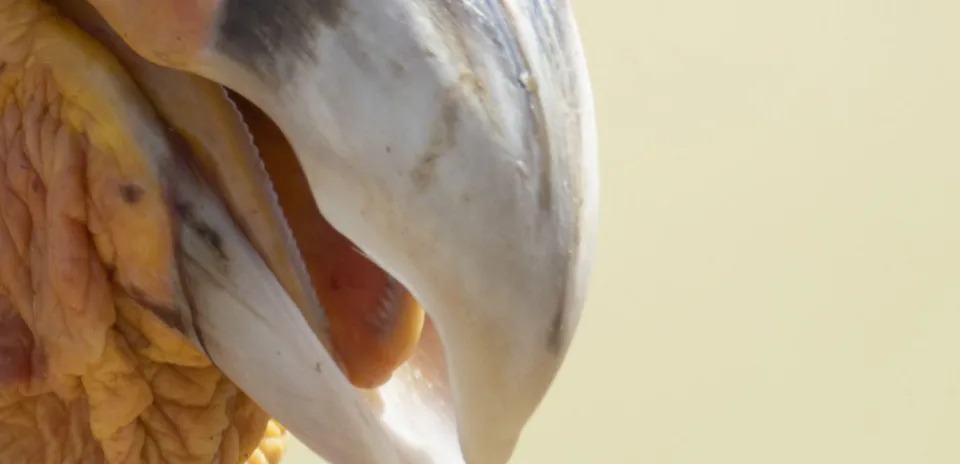
Endangered California condors are among the species that contracted the H5N1 bird flu. More than a dozen died before the U.S. Fish and Wildlife Service oversaw development of a vaccine that was successfully used to treat them.
March – April 2024
Viral infections occur for the first time in juvenile goats on a Minnesota farm where a poultry flock tested positive.
Virus found for the first time in dairy cows, at farms in Kansas and Texas. Later research suggests it was circulating since December, likely after introduction by a wild bird to a Texas cattle farm.
Testing of food products ramps up.
Virus found in unpasteurized clinical samples of milk at two Kansas dairy farms and one in Texas.
Fragments of the virus found in pasteurized milk, but aren't considered dangerous.
A farm worker in Texas tests positive for the virus, with conjunctivitis but not a respiratory infection, after coming into close contact with infected cows. It's the second human case in the U.S. and the first reported cow-to-human spread of H5N1 bird flu.
May 2024
Michigan dairy farm worker tests positive for the virus, with conjunctivitis symptoms.
Infection reported in another farm worker in the U.S., and this time the patient has respiratory symptoms, which healthcare researchers find more concerning. It's the fourth reported human case, the third by exposure to dairy cows.
This article originally appeared on USA TODAY: Bird flu in the US: A full timeline
